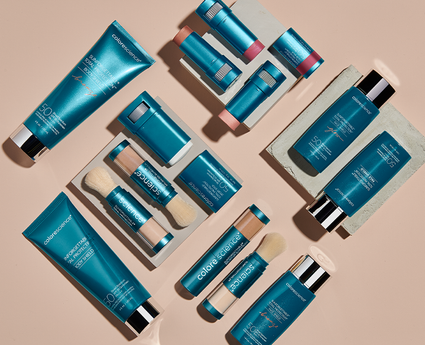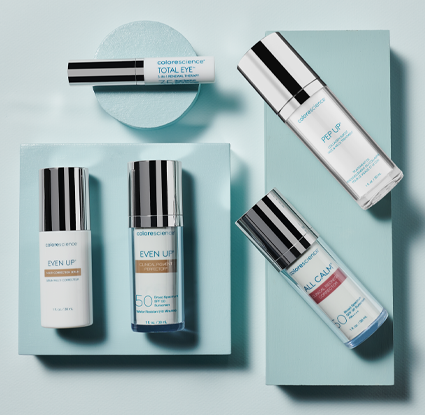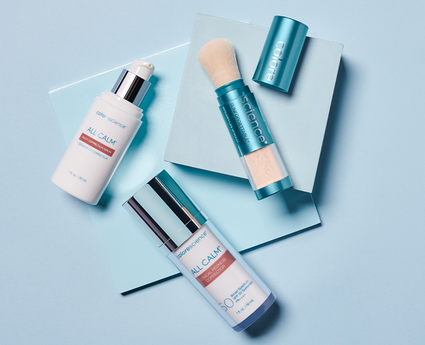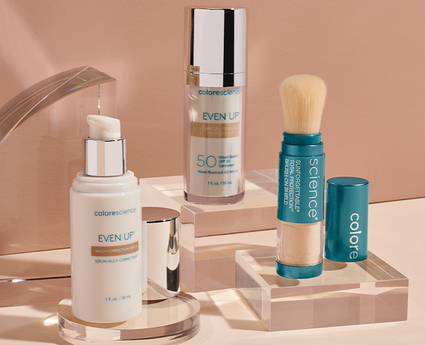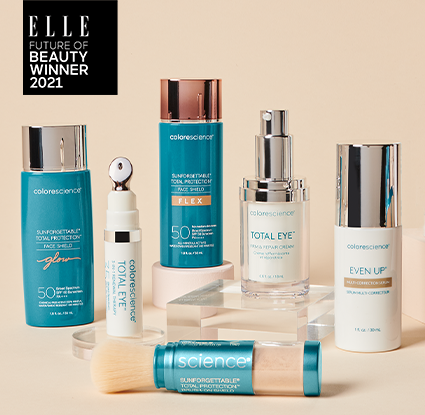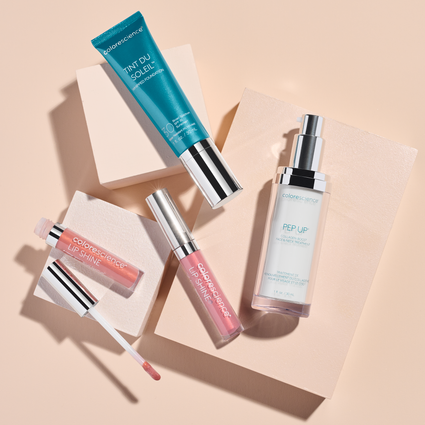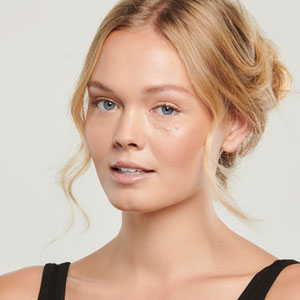The Ultimate Guide to Anti-Aging Skin Care

Does your skin look older than you feel? Would you like to preserve your youthful complexion? If you answered yes, it’s time to start implementing an anti-aging skin care routine. To protect against signs of aging, it’s better to start ahead and preventively maintain your skin’s health.
However, if you’re looking to erase the visible traces of life’s wear and tear, don’t fret – it’s not too late to restore youthfulness to your skin’s tone, texture, and elasticity. Whatever stage your skin is at, use this ultimate guide to anti-aging skin care to achieve the glowing look you deserve.
The Stages of Aging Skin
While environmental factors and lifestyle choices certainly affect the development of skin aging, there’s a natural, biological timeline you can expect your skin to follow. Some people might notice gradual changes in their complexion, while others begin to panic at “instant aging,” where a wrinkle or fine line seems to spontaneously appear overnight. No matter how you view it – in quick time or real time – there’s no getting around it: everyone’s skin ages. From adolescence into your 20s, you reap the benefit of ‘baby skin’. You might have suffered acne woes following the onslaught of puberty, but otherwise your skin is in its most vital, radiant condition. Unfortunately, after about two decades the baby fat will be all but lost from your skin, and you’ll begin noticing differences in your youthful complexion. Here’s what you can expect to experience during the various stages of your skin’s development:
- Age Group: 25-30
- Your skin is still mostly plump and voluminous with little to no fine lines.
- Many women begin to observe facial hair growth, often on the upper lip, around the perimeter of the face, or on the brows.
- The production of collagen and elastin slows down. Collagen (the main structural protein in the extracellular space within connective tissues) and elastin (the protein within connective tissue that allows the tissue to resume its shape after stretching or contracting) are responsible for your skin’s supple and firm qualities. As their production slows, skin elasticity decreases.
- This is the decade in which very early signs of ‘motor wrinkles’ – lines and creases related to movement – or wrinkles of expression first appear. Usually motor wrinkles will first form on the brow.
- If you spent a lot of time in the sun as a child – or long hours squinting at a computer screen – you might begin to develop “crow’s feet,” or tiny expression lines around the eyes.
- Skin becomes thinner, and nasolabial folds (from the nose to the corner of your lips) begin to appear.
- The complexion slowly begins to lose its radiance. Skin quality deteriorates with the development of childhood scars or acne spots.
- Women should start looking for melasma, a brown discoloration that appears across the cheeks or forehead. The condition is usually caused by a combination of sun exposure, pregnancy and hormones, plus antibiotic use.
- Age Group: 30-45
- While the skin still maintains some of its youthful appearance, it begins to look more ‘tired’ and less radiant.
- The area beneath the eyes, or “eye bags,” start to develop and darken.
- Larger pores appear along the nose, and fine blood vessels may become visible around the nasal opening and cheeks.
- Crow’s feet become fully formed, and previous sun damage may begin to exacerbate the appearance of small brown spots or freckles.
- Women should prepare themselves for the “dreaded 11’s” – the pair of lines that pop up between the brows – in addition to shadows forming in the triangular area between your nose and the corners of your mouth.
- Lines around the upper lip begin to appear, and if you smoke, they’ll come faster and go deeper from excessive use of what’s called the “purse string” muscle.
- At around age 45, the cheekbones are a little less plump and the temples start to deepen as the cheeks sag due to loss of volume.
- The early signs of marionette lines, or vertical “lowering” wrinkles, appear at the outer edge of the lips and smile lines are deepened.
- The skin appears thinner and displays more static wrinkles.

- Age Group: 50-60
- Elastin continues to disappear and the collagen structure changes. This may lead to a drooping effect as the skin loosens.
- A drop in estrogen that occurs during your 50s will cause the remaining collagen to look and feel softer and drier.
- Thinner skin makes it appear more translucent, which may make the blood vessels below the skin more prominent or for the skin to appear discolored.
- The texture of the skin thickens on the face and neck; this is especially true for smokers who will begin to display a ‘leathery’ appearance.
- Those with increased sun exposure will face the cumulative effects of sun damage, including a deepening of lines and wrinkles.
- As bone thins, the facial contours begin to change. The lower jaw might also change the shape of the face.
- The appearance of crisscross wrinkles in the neck may occur, and moisturizer becomes critical due to fewer fat cells and fewer sebaceous glands.
- The skin loses its ability to retain water – it has only one third of the capacity it did when you were a child.
4. Age Group: 65+
- Skin aging accelerates around age 65.
- The face loses its plumpness and density, causing facial structures to sag and at time’s disrupting the face’s harmonious oval shape.
- The pull of gravity will also make the skin hang and might make the nose appear to rest lower.
- Deep marionette lines cause the skin to droop around them.
- Skin becomes even thinner, making wrinkles far more evident.
- Crisscross wrinkles will appear in high movement areas, and very deep, prominent lines will collect on the eyes and around the forehead.
- Healing process of the skin will take longer, and bruising may become more frequent.
- The skin, and body altogether, will find it more difficult to remove waste products (such as through the pores), making it more prone to infection.
- Reduced blood circulation will lead to lower skin sensitivity.
- Vitamin D production in the skin will decrease.
Factors that Contribute to Wrinkles

The natural timeline of aging progression will vary from person to person, as a number of various factors can contribute to the formation of wrinkles. Among other causes, the top three sources that will impact the presence of wrinkles include:
1. Skin type
There are five main types of skin: normal, oily, dry, combination, and sensitive. Knowing which skin type you have will help you understand the way your skin will develop wrinkles.
- Normal skin will usually exhibit few lines and wrinkles.
- Oily skin ages more slowly and will develop fewer-than-average wrinkles, but the wrinkles will have deeper lines.
- Dry skin is thinner and prone to premature wrinkling as it will display finer, superficial lines.
- Combination skin that’s both oily and dry will likely develop wrinkles around the corners of the mouth before the brow.
- Sensitive skin may experience an early onset of wrinkles due to regular irritation.
2. Genetics
The genes you inherit play a role in how you age, and looking towards your mother could be a great point of reference for how wrinkles will later develop in your own complexion. A recent study has shown the ways in gene expression patterns and their mutations associate with both chronologic and photoaging. They found individuals with:
- Isolated growth hormone deficiency
- Multiple pituitary hormone deficiency
- Insulin-like growth factor deficiency
present signs of early skin aging including dry, thin, and wrinkled skin. People who carry these genetic deficiencies might pass them on to their offspring, which then in turn affects how and when they begin to show signs of aging. If you notice someone in your family who seemed to age too quickly, be sure to take preventive measures to avoid the same fate.
3. History of unprotected sun exposure
Photoaging refers to the premature wrinkling of the skin, as well as the growth of sunspots and loss of skin elasticity. It’s caused from the damaging UVA and UVB rays cast off by the sun. UVA rays penetrate deep into the dermis (your skin’s outer layers), while UVB rays typically burn the superficial layer of your skin (epidermis). The harmful effect of sun exposure on skin is one of the most researched, well documented understandings in dermatology. Science explains that sun exposure damages the skin in the following ways:
- UVA rays penetrate the dermis and cause abnormal production of collagen and elastin.
- The abnormality results in the production of an enzyme that attempts to rebuild the damaged collagen and elastin.
- The enzyme often malfunctions it its attempt and instead initiates a decomposition reaction.
- Repeated damage to collagen and elastin from malfunctioning enzymes causes wrinkly skin.
- Both UVA and UVB rays create free radicals – byproducts of metabolic or immune system processes that can cause significant damage when in excess quantity.
- Sun exposure quickly depletes the skin’s supply of antioxidants that maintain its healthy complexion.
The ultra violet (UV) light contained in sunshine is responsible for 80% of the skin’s visible aging signs. In addition to skin type and heredity, a number of other sources contribute to the formation of wrinkles, including: smoking, pollution, wind, dry air, changes in temperature or humidity, dietary imbalance, diabetes and other chronic illnesses, stress, changes in hormonal balances and gravity.
Signs of Skin Aging
Aging signs can be classified into four main categories:
- Wrinkles/texture
- Lack of firm of cutaneous tissues (ptosis)
- Vascular disorders
- Pigmentation heterogeneities

How can you tell when your skin begins to age? Studying your complexion can be quite revealing, and will tip you off to any premature signs of age. When searching for signs of skin aging, look out for:
- Crow's Feet
- Wrinkles
- Dry skin
- Saggy skin
- Age spots
- Large pores
- Dark undereye circles
How to Prevent Premature Skin Aging

Although the signs of aging are impossible to escape, they are possible to slow down. The best way to avoid signs of aging is to proactively prevent them from. Follow these steps diligently to avoid premature aging and maintain a youthful, radiant complexion:
- Wear sun protection every day
This is perhaps the most obvious – and most important – skin care tip. If you’re concerned about premature aging, never walk out the door in daylight without at least SPF 15 applied. Remember that your skin is still susceptible to UV rays even through cloud coverage. The more sun exposure you have had, even as a child, the earlier your wrinkles will appear. Next time you’re sun tanning at the beach, recall that today’s freckles become tomorrow’s age spots.
- Stop smoking
Cigarettes are only second to sun exposure as the leading cause of skin damage. As mentioned, inhaling a cigarette employs the strength of the face’s purse string muscle. When the purse string muscle is overused, it will cause wrinkles around the mouth from constant tension and flexion. Furthermore, the nicotine in cigarettes cause the narrowing of blood vessels in the outermost layers of the skin, which impairs blood flow. With less blood flow, the skin doesn’t receive as much oxygen and important nutrients, such as Vitamin A. There are more than 4,000 chemicals in tobacco, and many of them are damaging to collagen and elastin. Without these strong fibers for support, the skin begins to sag and prematurely wrinkle. As if you needed another reason to quit, cigarettes will make you age faster – and they’re bad for your health. Put the pack down and stop smoking.
- Eat a healthy diet
If it’s bad for your waist, it’s bad for your face. Aging is basically a chronic inflammatory state, and poor-quality foods, like trans fats, induce inflammation. Eating too much sugar or processed carbohydrates can lead to damage in the skin’s collagen, detracting its springiness and resistance to wrinkles. Nutrition can have a huge impact not only on how you feel, but on how you look.
Foods to Avoid for Anti-Aging
-Potato chips and French fries: anything that’s deep-friend in oil can add to inflammation in your body.
-Hot dogs, bacon, and pepperoni: processed meats are usually high in saturated fat and nitrates.
-Doughnuts and sugary pastries: avoid anything packed with sugar, as it’s been linked to the formation of wrinkles.
-“Healthy” cereal: labels are often deceiving, and many cereals that claim to be healthy are full of sugar and highly refined. Be sure to read the label to avoid any wrinkle-inducing glucose spikes.
-Juices and sodas: most juices are simply sugar delivery vehicles, and are just as bad as soda. Juices also lack fiber, which is essential for preventing the blood sugar swings that cause premature aging.
-Caffeine: this beverage has a dehydrating property that can dry out your skin and make it more likely to display the fine lines on its surface.
-Alcohol: moderate drinking may be good for your heart, but heavy drinking can accelerate the aging process.
Food to Favor for Anti-Aging
-Romaine lettuce: it’s high in vitamins A and C, which curb inflammation. Also try broccoli, spinach, arugula, watercress, escarole, and endive.
-Salmon: this fish is high in omega-3 fatty acids which fight inflammation. Tuna is another good choice.
-Tomatoes: in addition to tomatoes, watermelon, grapefruit, guavas, asparagus, and red cabbage are rich in a nutrient called lycopene, which benefits the skin.
-Lentils and beans: black beans, split peas, limas, pintos, chickpeas, and cannelli beans are good sources of protein loaded with fiber and nutrients.
-Oatmeal: whole grains such as oatmeal, whole wheat breads and pastas, brown rice, and quinoa help stop inflammation.
-Vitamins A, C, and E and minerals zinc and selenium: look for foods rich in these nutrients, as research suggests they help keep wrinkles at bay by reducing the amount of potentially damaging free radicals produced by skin cells.
Remember that what you put on your plate will dictate what you see in the mirror. Go for more vegetables, fruits, whole grains, low-fat dairy, and lean protein to fight inflammation. Don’t look older due to a bad diet.
- Exercise regularly
Exercise not only prevents wrinkles, but can also reverse aging signs for those later in life. A study performed on mice and replicated on humans showed that participants who exercised regularly had visibly younger looking skin. The dermis was markedly thicker and the statum corneum (the outer layer of the epidermis) was healthier. Scientists theorize that aerobic exercise promotes blood flow to the skin, which helps increase the rate of new cell growth and the production of natural oils and moisture. Exercising regularly will help the skin stay flexible and supple, thereby preventing wrinkle formation. Be wary of facial exercises, though – they can lead to expression lines.
- Cleanse skin gently
You might be practicing a good skin care routine, but if you’re doing it wrong, you could be giving yourself wrinkles. A clean face allows your skin to breath, rest, and regenerate. Remember that the goal is cleanse your face, not wash it. Vigorous scrubbing should be avoided due to the stress it imposes on the facial tissue. Be sure to gently remove your make up before washing your face with a simple cleansing wipe to avoid harsh scrubbing gestures. Apply your cleanser softly, in smooth circular motions, and always pat – not rub – it dry with a clean towel.
- Wash your face regularly
Not washing your face at the end of your day could eventually cause wrinkles. When you sleep in your makeup, the layers of dirt, grime, dust, and environmental pollutants seep into your pores. From there, they break down collagen and elastin which can induce premature aging. By not washing your face regularly, you’re likely making your skin dull or lackluster in appearance, not to mention clogging your pores. Be sure to take off all that gunk by washing your face before heading to bed.
- Apply moisturizer every day
You’re sure to see heavy creams and serums lining the shelves from drugstores to department stores promising the erasure of wrinkles. While some of these products might actually deliver a punch, the best course of action is to avoid them altogether by preventing wrinkles in the first place. It’s incredibly important to apply moisturizer every day to keep your skin hydrated both in and out. Without proper hydration, skin cells will dry out and make your complexion appear dull or more wrinkled. For the most advanced anti-aging moisturizer, look for creams and serums containing retinoid – a derivative of vitamin A that boosts collagen to reduce fine lines and increases cell turnover speed to even out discoloration.
- Avoid harsh skin care products
You might think your face is squeaky clean, but harsh products can actually strip the skin of its natural barrier oils and moisture that protect against wrinkles. Without sebum – or oil – the skin can’t retain its hydration, causing it to dry out and allowing fine lines to creep in. Common ingredients listed in harsh skin care products include alcohol, fragrance, lanolin, and other astringent chemicals. Use only natural, organic products when possible and remember that less is always more. If you’re using gentle products and still experiencing skin sensitivities, such as dryness, irritation, or stinging, remember that tap water can be incredibly harsh. Try washing your face with micellar water instead.
Until we discover the fountain of youth, aging is an inevitable process that at some point we’re forced to accept. However, there are measures you can take to prevent signs of aging – without cosmetic surgery. Use this guide and adopt a few simple strategies in your day to day routine that can ward off premature aging. We’re all living longer, so the earlier you start an anti-aging skin care routine, the younger you’ll look as the years advance.

